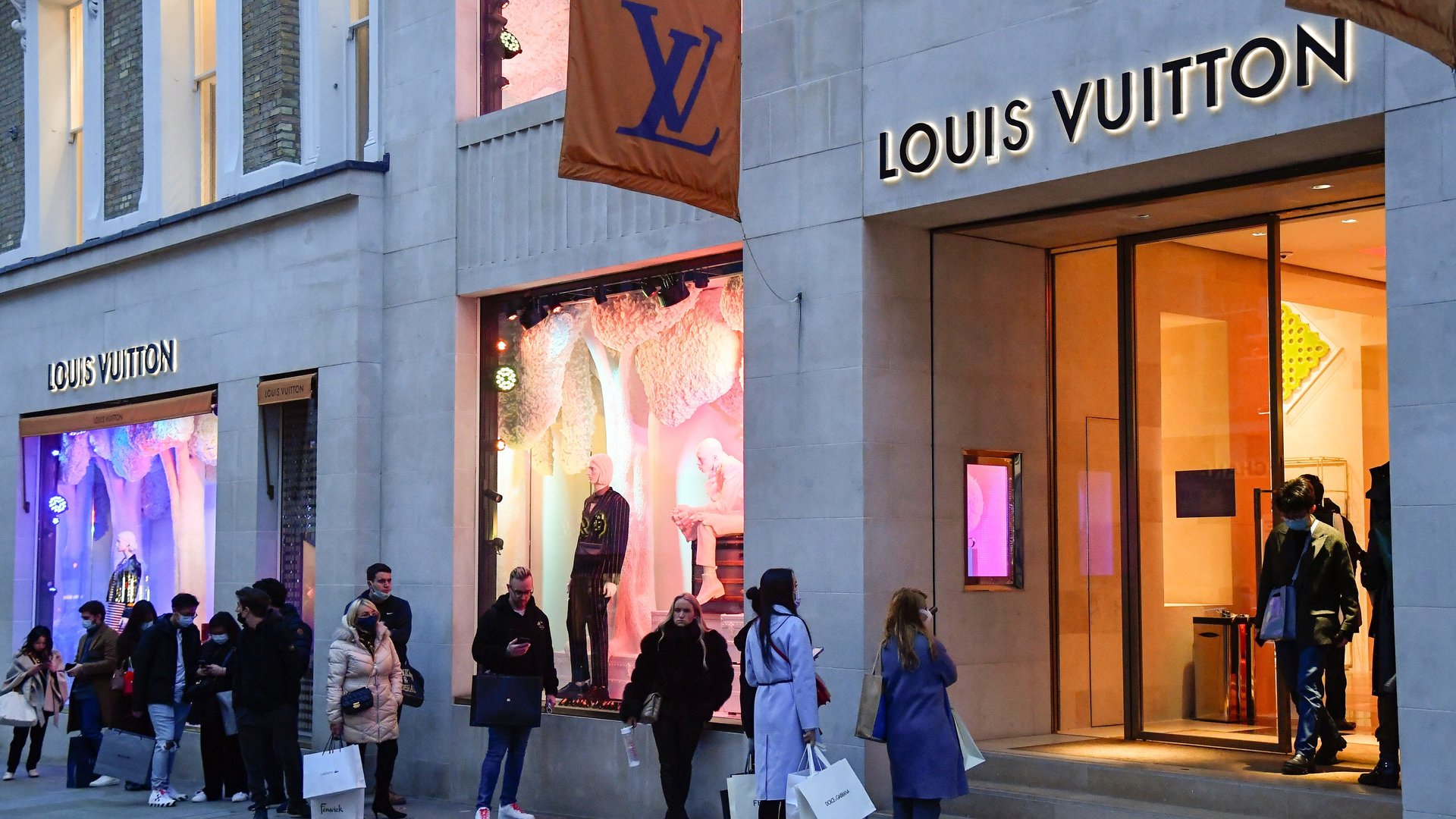Luxury fashion is already rebounding from the pandemic
While many companies are still suffering in the pandemic, some of luxury fashion’s biggest names are already showing signs of a recovery.


While many companies are still suffering in the pandemic, some of luxury fashion’s biggest names are already showing signs of a recovery.
Earlier this month, Prada reported (pdf) an improvement in its retail sales through the second half of 2020, culminating in a return to pre-pandemic levels in December. Richemont, owner of brands including Cartier, Piaget, and Chloé, followed last week, saying sales between October and December were up slightly (pdf) compared to the same period the year before.
Now LVMH, luxury’s largest conglomerate, has offered another positive result. In an announcement yesterday, the company said its fashion and leather goods division grew 14.3% in its most recent quarter. Made up of brands such as Louis Vuitton, Christian Dior, and Fendi, the segment had its second quarter of solid growth.
🎧 For more intel on fashion trends, listen to the Quartz Obsession podcast episode on puffer jackets. Or subscribe via: Apple Podcasts | Spotify | Google | Stitcher.
It wasn’t quite enough to offset the declines in LVMH’s other divisions. Sales of wine, champagne, and spirits remained down with restaurants and clubs still closed. Shoppers stuck at home also didn’t buy as much makeup or spend at duty-free stores. Total sales at the company were down about 6% overall. But products from its fashion brands, Louis Vuitton and Dior in particular, drew back customers.
Many of the purchases were made by shoppers in China, the US, and Japan. The appetite for high-end spending across these nations, especially China, has picked up compared to earlier in the pandemic. On a call with investors and analysts to discuss the results, Jean Jacques Guiony, LVMH’s CFO, also noted that sales of Louis Vuitton items to American shoppers were up in a “very strong, double-digit way.”
In Europe, the picture was more complicated. Luxury shops in the region depend on tourists for a sizable share of their sales. But tourism, and the spending that comes with it, is practically nonexistent right now. Though local shoppers are buying more, it hasn’t been enough to make up for the loss of tourists. Meanwhile, shoppers who would normally have picked up their new Dior bag at a boutique in Paris have been opting to make their purchase at home in, say, New York or Shanghai—sometimes literally: Online purchases of luxury have grown just like online sales of everything else.
Guiony said it wasn’t entirely clear why locked-down shoppers are still scooping up luxury goods. He said it’s difficult to isolate specific causes and LVMH would only have a better sense given more time. From the company’s perspective, Louis Vuitton and Dior had a strong array of new products designed before the pandemic arriving in stores and they had adjusted their marketing given the circumstances, targeting geographies such as Asia. Customers responded.
Early signs of recovery in China are evident in the rebounding traffic in high-end malls in major cities, said Fflur Roberts, head of global luxury goods at Euromonitor International, a market research provider, in an email. Shoppers are also buying “for investment purposes,” she said, “with many consumers scrambling to buy luxury goods that can hold their value best during this time of uncertainty.”
After the great recession of 2007 to 2009, companies such as LVMH and Hermès flourished amid what one analyst later described as “flight to quality.” Right now, the wealthy in countries such as the US are bouncing back financially from the pandemic faster than others. For luxury sellers, that means more potential customers ready to spend again.